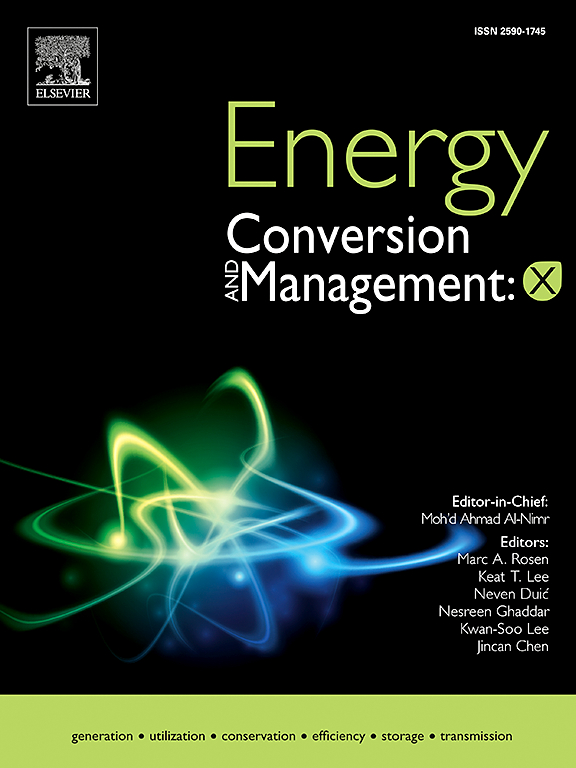Optimizing urban energy flows: Integrative vehicle-to-building strategies and renewable energy management
IF 7.1
Q1 ENERGY & FUELS
引用次数: 0
Abstract
The increasing integration of electric vehicles (EVs) into urban centers poses significant challenges for electrical grids, particularly in terms of energy management within buildings. This study introduces a scalable, multi-objective optimization model that utilizes Vehicle-to-Building (V2B) interactions to mitigate grid load by leveraging EVs as mobile energy storage units. This approach enhances grid stability and resilience while optimizing energy consumption, reducing peak loads, and minimizing emissions. We employ a weighted-sum method for flexible adaptability, allowing system priorities to be adjusted according to varying needs. The optimization tasks are handled using the Sequential Least Squares Programming (SLSQP) algorithm, which is well-suited for managing quadratic objective functions, nonlinear constraints, and bounded variables. Conducted at selected facilities at National Taiwan University (NTU), the model’s effectiveness is demonstrated across four scenarios—each evaluating the contributions of photovoltaics (PV), V2B strategy, and an energy storage system (ESS) both individually and collectively. The results reveal significant benefits: a 46.79% annual reduction in grid energy consumption, along with notable decreases in daily peak load (63.49%), electricity costs (51.15%), and carbon emissions (45.99%) compared to a control setup. Additionally, our economic analysis underscores the cost-effectiveness of integrating PV with V2B technology, achieving a cost reduction of 40.83%. Although the inclusion of ESS incurs higher initial costs, it significantly improves peak load management by an additional 14.11%. This study not only underscores the practicality and economic viability of the model but also highlights its potential as a flexible tool in advancing sustainable urban energy solutions. Through comprehensive cost assessments and sensitivity analysis, this research enhances the capacity for intelligent, adaptable, and resource-efficient energy management in urban transport infrastructures.
求助全文
约1分钟内获得全文
求助全文
来源期刊

Energy Conversion and Management-X
Multiple-
CiteScore
8.80
自引率
3.20%
发文量
180
审稿时长
58 days
期刊介绍:
Energy Conversion and Management: X is the open access extension of the reputable journal Energy Conversion and Management, serving as a platform for interdisciplinary research on a wide array of critical energy subjects. The journal is dedicated to publishing original contributions and in-depth technical review articles that present groundbreaking research on topics spanning energy generation, utilization, conversion, storage, transmission, conservation, management, and sustainability.
The scope of Energy Conversion and Management: X encompasses various forms of energy, including mechanical, thermal, nuclear, chemical, electromagnetic, magnetic, and electric energy. It addresses all known energy resources, highlighting both conventional sources like fossil fuels and nuclear power, as well as renewable resources such as solar, biomass, hydro, wind, geothermal, and ocean energy.
 求助内容:
求助内容: 应助结果提醒方式:
应助结果提醒方式:


